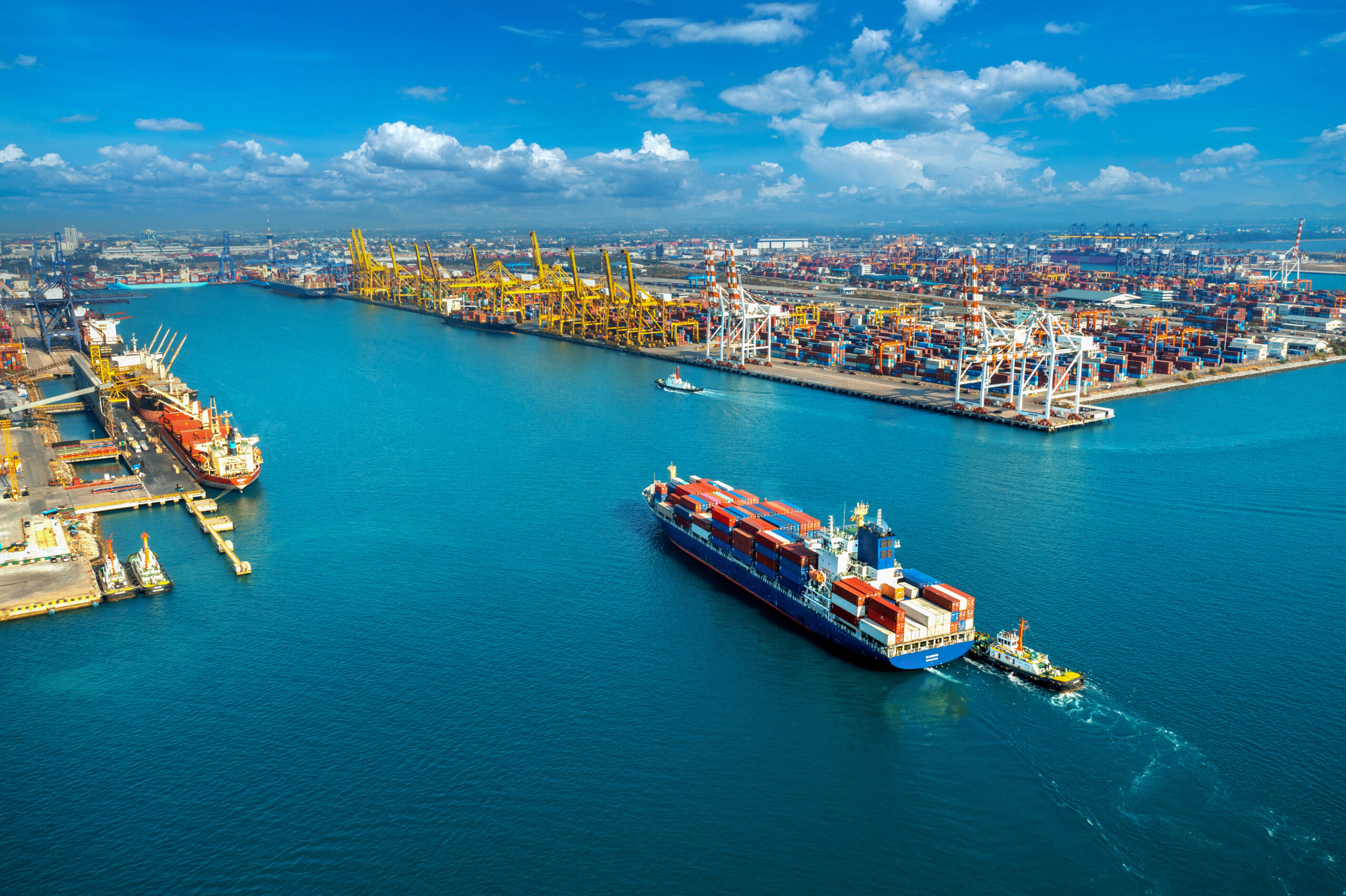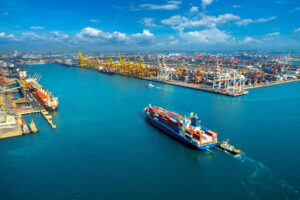Tariffs, especially when they change suddenly, create waves beyond product pricing.
When duties alter trade volumes, the impact spreads into container logistics. Lower headhaul demand leaves carriers with fewer incentives to reposition empties, which in turn drives up backhaul rates.
The effect is not uniform across regions: Asia lanes have registered higher quotes, while Caribbean and South American routes show a more uneven picture.
How tariffs distort flows
Tariffs don’t just raise costs at the border; they also reshape the rhythm of shipping demand.
When new duties are announced, importers often front-load cargo to beat the deadline. Once that rush passes, volumes dip sharply, prompting carriers to cut sailings. With fewer headhaul shipments to subsidize repositioning, empty containers become scarcer and backhaul rates climb.
This pattern played out in late 2024 and early 2025: brief pauses in tariffs sparked short-lived surges, followed by blank sailings and higher costs for shippers depending on return legs, as noted in Cello Square’s 2025 analysis.
What the indices really show today
At first glance, global indices might suggest easing freight costs. But averages can be misleading if you’re booking space on specific lanes.
For example, spot rates from Asia to the U.S. West Coast fell nearly 60% from June highs, and East Coast rates dropped almost 50% yet certain Asian backhaul lanes moved in the opposite direction.
Similarly, the FBX index captured brief spikes of 9–11% in June before collapsing again. These contradictions underscore the point: headline numbers smooth over the peaks and valleys that procurement teams actually face when negotiating freight. Lane-level visibility is essential to avoid being caught off guard.
Asia focus: why some Philippines lanes nudged up
The lane-level volatility seen in global indices is also playing out in Southeast Asia.
In the Philippines, where Subic Bay and Manila serve as key gateways, backhaul costs have started to creep upward.
The reason ties back to the same dynamic discussed earlier: when U.S.-bound headhaul demand softens, carriers scale back the subsidies that usually offset return trips. Without those offsets, importers face higher charges on shipments moving back into the Philippines.
Analysts also point to routing adjustments as an added factor. When carriers prioritize higher-yield corridors, smaller ports like Subic Bay often get left with tighter capacity and steeper quotes.
In practice, this means Philippine shippers are navigating not only tariff-driven distortions but also competitive pressure from larger trade hubs.
What to watch on Philippine routes
Several indicators deserve close monitoring for importers in this market:
- Schedule reliability: According to Sea-Intelligence data, global reliability climbed to 67.4% in June 2025, the best since 2023. On Asia–U.S. routes, reliability reached 78% to the West Coast and 71.2% to the East Coast. This gives buyers slightly more certainty in planning.
- Quote windows: With capacity tight, rate quotes may only stay valid for a few days. Shippers who book early tend to secure better terms, while last-minute buyers risk sudden rate hikes.
- Seasonal volatility: Tariff deadlines often trigger front-loading followed by sharp declines. For Southeast Asia, this cycle overlaps with agricultural export seasons, producing rapid swings in freight pricing.
Caribbean & South America: why some quotes eased
While Asian lanes like the Philippines have seen backhaul pressure intensify, the story in the Caribbean and South America has been more uneven. Some routes have actually eased.
A big reason is how tariff exposure differs by country. Mexico, Brazil, and parts of Central America face higher effective rates, while Chile and Peru remain partly insulated through free trade agreements.
When tariffs reduced U.S. demand for Brazilian exports, outbound volumes dropped, leaving carriers with more available space. That extra capacity, in turn, blunted the impact of planned General Rate Increases (GRIs). Meanwhile, operational factors also shaped rates: congestion at the Panama Canal and vessel delays in Cartagena disrupted sailing schedules, creating temporary slack that softened spot quotes.
Reading the recent patterns
A few examples show how this has played out on the ground:
- Brazil: Soybean and steel exports saw cancellations as new U.S. tariffs took hold, easing lane pressure.
- Panama/Caribbean: Canal transit delays forced carriers to reshuffle capacity, slowing rate escalations in nearby ports.
- Chile/Peru: Thanks to trade agreements, copper and mining exports saw limited disruption. Stability here contrasts with tariff-exposed neighbors, underlining the uneven picture.
Final perspective: a lane-by-lane market
Global freight indices often tell only part of the story. While averages may suggest easing, real conditions diverge sharply by corridor. Philippine backhauls nudged higher even as Asian headhaul rates dropped, while South America showed contrasts, Brazil softened, but Chile held steady thanks to trade agreements.
For shippers, the lesson is straightforward: don’t rely on global numbers. Corridor-specific analysis is the only reliable guide. That means watching tariff exposure country by country, how carriers reposition equipment, the role of seasonal exports, and the effect of local port congestion.
The broader perspective is that tariffs and trade policy don’t move markets in one direction. Instead, they produce uneven outcomes. Sometimes within the same month. Staying competitive means tracking lane-level realities, staying alert to policy shifts, and negotiating flexibly rather than reacting to headline averages.





